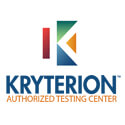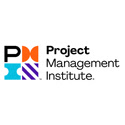Certified Cloud Security Professional (CCSP)
About This Course
(ISC)² is one of the industry leaders in providing information security certifications worldwide. One of the leading membership association bodies for cultivating IT leaders, the association is devoted to help professionals learn and prosper in the field of IT security. With more than 130,000 certifications handed out successfully, (ISC)² intends to validate IT experts in every single aspect of information security be it on-premise or cloud.
The CCSP certification program at Tech-Act intends to instill the knowledge of cloud infra security, software and cyber. The coursework revolves around cloud computing principles, cloud architecture, cloud security protocols and cloud services.
Simply put, the CCSP certification program will help you learn about cloud security operations, applications, design and architecture. Globally approved and recognized, the CCSP certification reflects industry standards when it comes to cloud security.
The CCSP certification validates that you have in-depth understanding of cloud security design, services and operations.
Who Should Attend This Course
The perfect audience for the CCSP certification course include:
- Experienced IT people involved in information security:
- IT architecture
- IT auditing
- Governance
- Security engineering
- Compliance
With that being said, the course is ideal for:
- System architects
- Security managers and engineers
- Security consultants and architects
- Systems engineers
- Security admins
- Enterprise IT architects
Why This Course
Here’s why earning a CCSP certification is a wise investment for you:
- Instant credibility. Yes, the CCSP certification positions you as industry-grade cloud security expert.
- Vendor neutral coursework, which helps you earn practical expertise and knowledge.
- Cutting edge. Lets you stay ahead with current cloud security practices and concepts.
- The certification not only boosts your market value, but also ensures that you are well-armed to safeguard sensitive data.
- Improves career opportunities.
- CCSP ranks on top when it comes to systems security certifications.
- ANSI (American National Standards Institute) accredited.
Course Objectives
Upon completion of the CCSP course, you will:
- Gain a strong foothold in cloud security and computing concepts
- Understand design concepts for secure cloud
- Learn about cloud data and its lifecycle
- Be able to architect cloud storage
- Be able to apply data classification and discovery concepts
- Be able implement data recovery policies
- Learn about risk assessment
- Design cloud architectures
- Learn about legal requisites, privacy concerns and auditing within cloud infra.
Course Prerequisites
IT security experts with a least of 5-years experience including one-year experience in cloud security and information security.
Course Benefits
Post the successful completion of the CCSP course, you will:
- Learn about various cloud computing concepts
- Learn about cloud architecture
- Earn knowledge pertaining to various cloud security concepts and principles
- Learn about trusted cloud architecture and services
- Learn about secure cloud computing concepts.





























